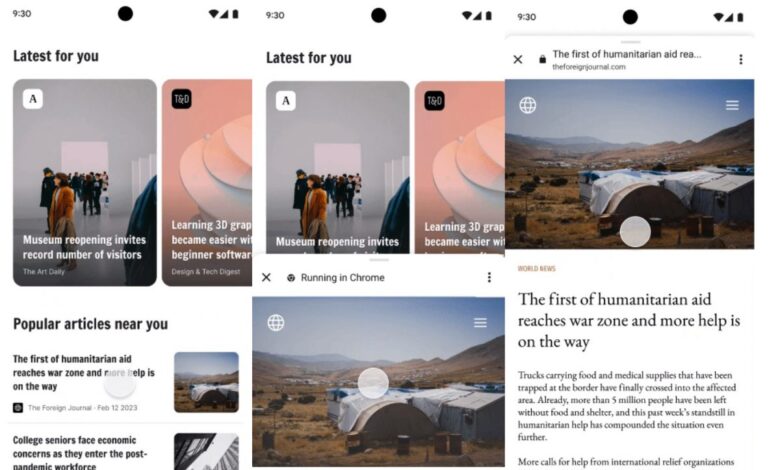Google improves Android’s in-app browsing with these two enhancements

Google Android device owners may soon see improvements when apps on their device utilize an in-app web browser.
Android app developers have two main choices when it comes to the display of web content; they may either load it in a mobile browser on the system, or use a technology called WebViews to display the content in the app.
The first option has the disadvantage of app switching, as users are redirected to a browser app on the device. There is a chance that users may forget about the session or close the original app the link was opened from in the progress.
Android’s in-app browsing technology is getting two enhancements, which Google has started to roll out already. Both of these work only in browsers that support them, most notable Google Chrome.
Better multitasking through split-views
The first improvement adds the partial custom tabs feature to the developer’s arsenal. It enables developers to display web content in a partial overlay in the application interface. Users of the app may interact with it and the loaded web content at the same time.
The feature is supported by Chrome only at the time, but Google announced that it is looking “forward to additional browser support soon”. Browsers that do not support the functionality display the full-screen custom tab instead.
Developers may customize the height of the web content in their apps; this gives them full control over the partial overlay in the app. The view may be expanded by the user of the app to take advantage of the full screen size.
Options to close the content are provided. The in-app browser will also highlight the name of the web browser by stating “running in” for a brief moment before the actual website URL is displayed in the address bar.
Passwords and auto-fill support
The second new feature adds password management and auto-fill support to the in-app browsing experience. Also only supported by Chrome for now, users may use Chrome features to sign-in to sites using stored passwords in the browser’s password manager and auto-fill, to improve the filling of data in fields displayed in the in-app browser.
App creators may benefit from this approach in a number of ways, including making it easier for their users to sign-in to web services displayed in the app.
Developer resource
Android app developers find an overview of the improved Custom Tabs feature of the Android ecosystem on the Chrome Developers website. There, Google explains how custom tabs may be personalized for individual apps.
Developers may change the launch height of the interface, the toolbar color, open and exit animations, and add custom actions to the toolbars and overflow menu. There is also an option to pre-start the browser and pre-fetch web content to improve the loading time.
Closing Words
App developers need to adjust their apps to take advantage of the new capabilities of custom tabs. Some will likely do so right away, but not all apps will suddenly support the new functionality.
Now You: split view on mobile or redirection to another app, which do you prefer?
Thank you for being a Ghacks reader. The post Google improves Android’s in-app browsing with these two enhancements appeared first on gHacks Technology News.
gHacks Technology News
